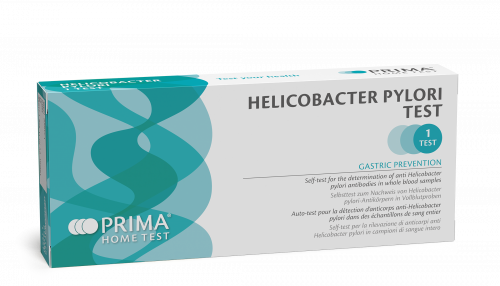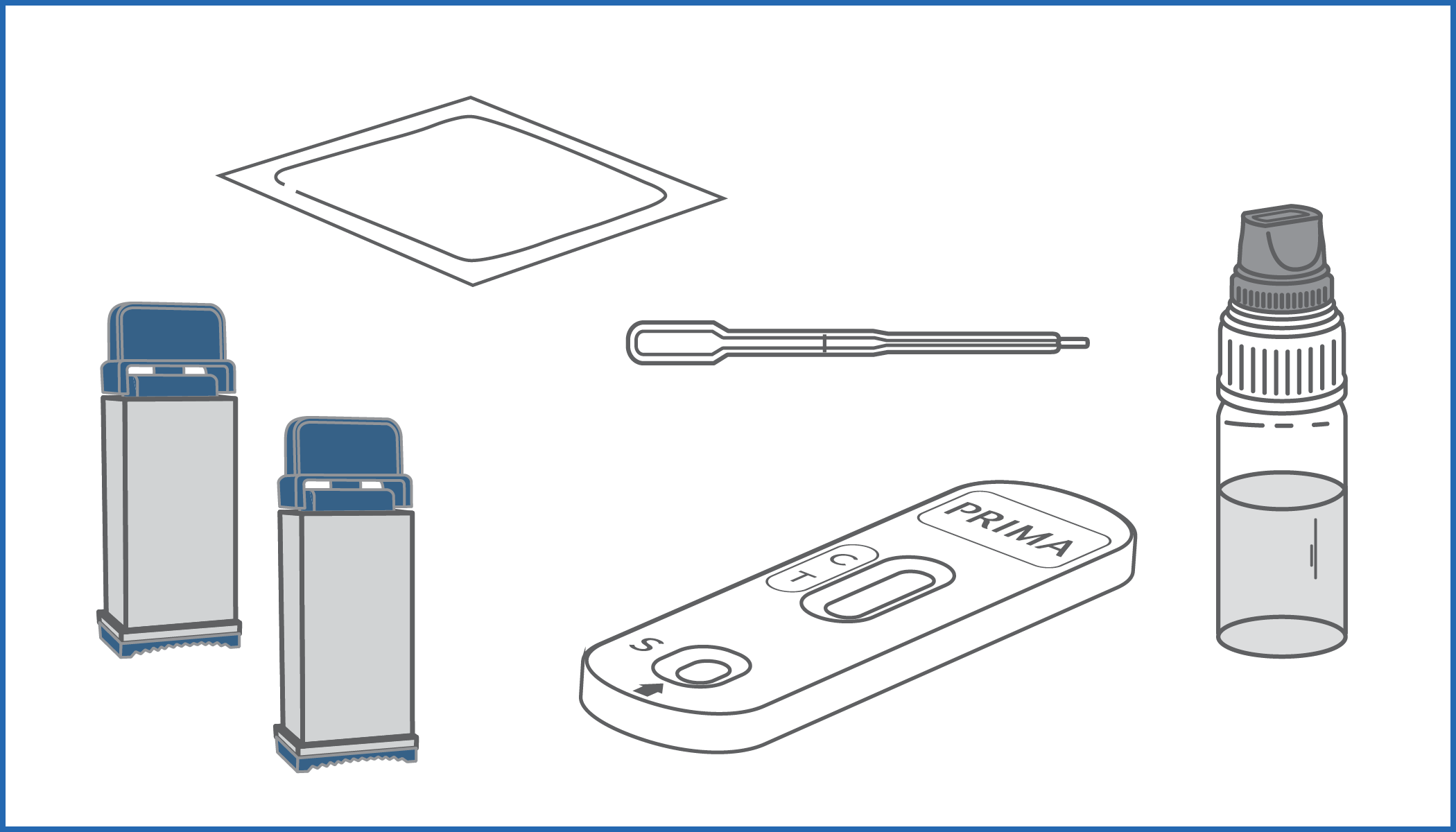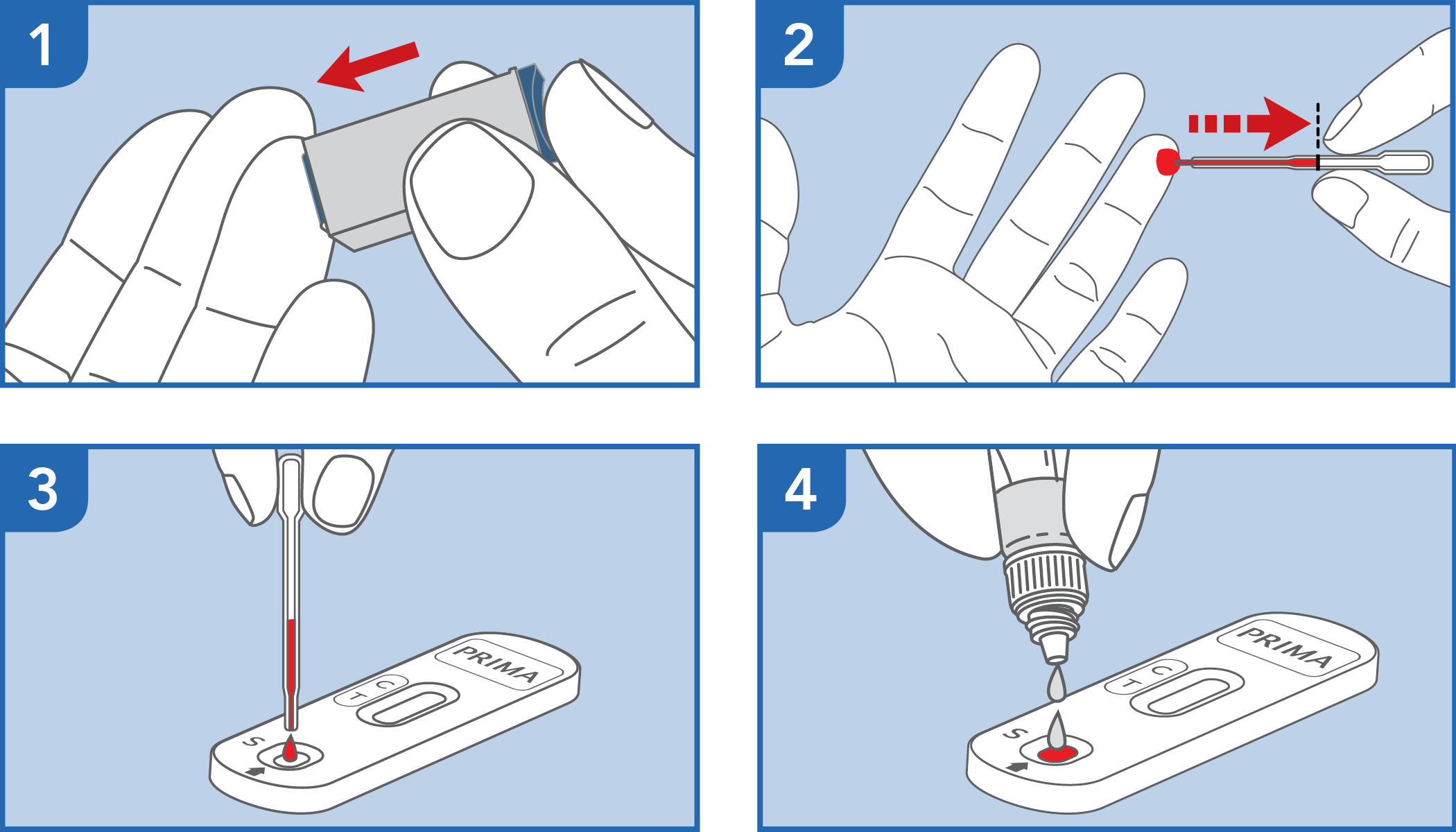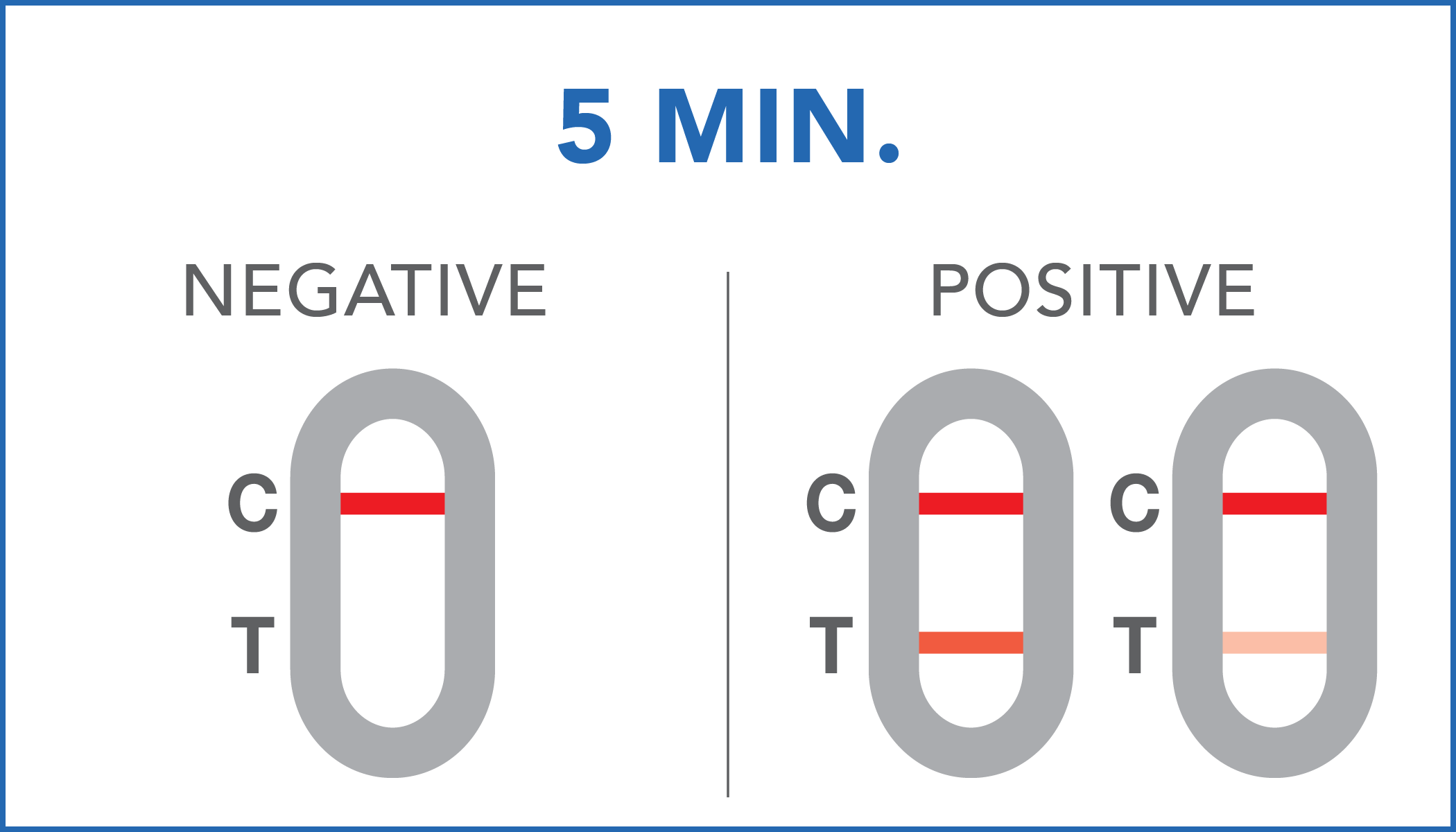



PRIMA HOME
PRIMA PROFESSIONAL
Self-test for the detection of anti Helicobacter pylori antibodies in whole blood samples






Helicobacter pylori is a bacterium, whose ideal habitat is the human gastric mucosa, causing an often asymptomatic infection of the gastrointestinal tract.
read moreSometimes the presence of this bacterium can cause gastritis and ulcers in the stomach or duodenum. The most common symptoms of these conditions are: burning or pain in the upper abdomen, especially between meals when the stomach is empty, nausea and a sense of fullness, reflux, loss of appetite and weight loss. On the long-term the Helicobacter pylori infection is associated with an increased risk of gastric cancer.
HELICOBACTER PYLORI TEST is useful for a first screening of an ongoing or a past infection of H. pylori.
read moreThis bacterium chronically affects about half of the world’s population and plays an important role in the pathogenesis of chronic gastritis, peptic ulcer, gastric cancer, and mucosal-associated lymphoid tissue lymphoma.
HELICOBACTER PYLORI TEST is an immunochromatographic device that detects the presence of anti-Helicobater pylori IgG antibodies in blood samples.
| Specificity | 84.2% |
| Sensitivity | 95.8% |
| Accuracy | 87% |

 USE PROCEDURE
USE PROCEDURE 
 RESULTS INTERPRETATION
RESULTS INTERPRETATION 
| Negative | no IgG antibodies against Helicobacter pylori have been detected in the sample or their concentration is below the cut-off of 15 AU/mL. |
| Positive | IgG antibodies against Helicobacter pylori have been identified in the sample, it is necessary to check a possible exposure to the bacterium with a specialist. |
1. Mati Moyat, Dominique Velin. Immune responses to Helicobacter pylori infection. World J. Gastroenterol. 2014 may 21; 20(19): 5583-5593IgE.” Journal of Allergy and Clinical Immunology. 2014;133(2):589-91.
2. Khean-Lee Goh, Wah-Kheong Chan, Seiji Shiota and Yoshio Yamaoka. Epidemiology of Helicobacter pylori Infection and Public Health Implications. Helicobacter, 2011 Sep;16(0 1):1-9.
3. Kyichi Adachi, Tomoko Mishiro, Shino Tanaka and Yoshikazu Kinoshita. Analysis of negative result in serum anti-pylori IgG antibody test in cases with gastric mucosal atrophy. J. Clin Biochem Nutr.2016 Sep;59(2):145-148.
The test has been carried out correctly when the instructions for use are followed. It includes the reading time and the interpretation of the results shown at the "RESULTS INTERPRETATION" section of the instructions for use.
A colored line will appear at the control region (C) on the test device, showing that the test performed correctly. The absence of the colored line suggests to repeat the test with a new device and a new sample.
The color and intensity of the lines do not affect the interpretation of the result. The test has to be considered positive regardless of the color intensity of the test line (T).
Check product availability with the local representative in your country
